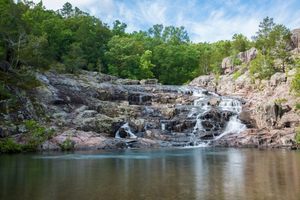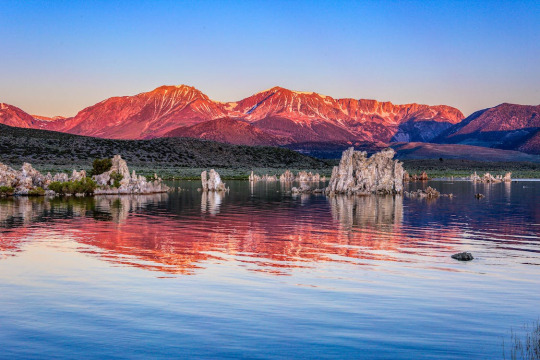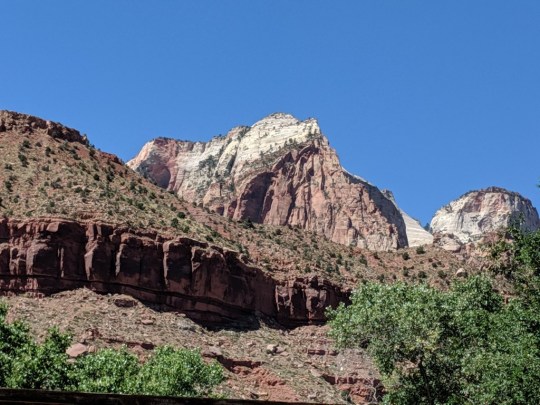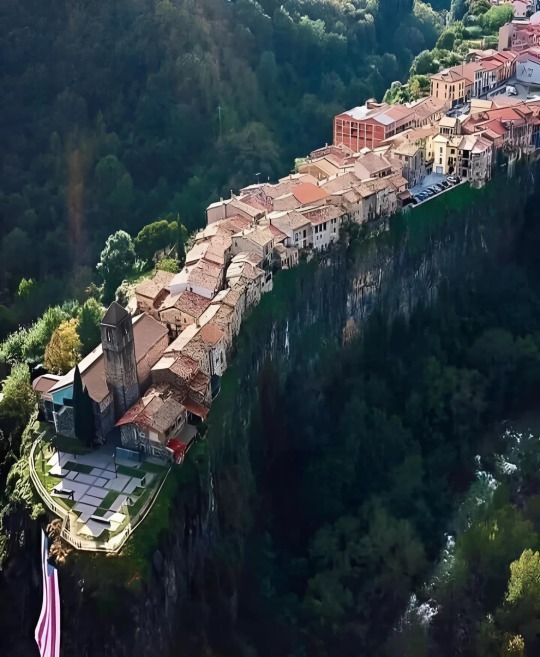#Geological Wonder
Photo

Golden ridges weave a mesmerizing pattern at Zabriskie Point, offering a striking contrast against the deep blue sky. Catch a mesmerizing view of Death Valley's geological wonder under the warm California sun.
#Death Valley#Zabriskie Point#Golden Ridges#California#Blue Sky#Geological Wonder#Desert Beauty#Nature Photography#Landscape#Warm Sun#Mesmerizing Views#California Sun#Travel#Outdoor Adventure#National Park
6 notes
·
View notes
Text
i do think one pretty great get-to-know you question is: when you want to know about a place, what do you look up
#this post brought to you by my beloved dnd friends. LAUGHING at me.#bc one of them was wondering what ore deposits might occur in the setting of our game (western montana)#and i perked up like. oh i already looked up the geological history of the area! :D#''of course you did'' AND???????#suz yells
4 notes
·
View notes
Photo

Rocky Falls in Winona, Missouri
When molten rock belched up from the Earth and oozed across its surface 1.5 billion years ago, no one was around to see it slowly form this majestic swimming hole, known as Rocky Falls. That volcanic rock hardened into reddish-brown rhyolite porphyry. The rushing spring-fed waters would have carved softer rocks into a canyon, but rhyolite is too hard to be eroded in that way. Instead, the stream wriggled into little cracks, eroding any soft rock, and leaving smooth hard rhyolite 'shut-ins.' Shut-ins are common in the Ozarks and describe the unique plunge pools and chutes streams carved millions of years ago in the tough volcanic rock. Rocky Falls is a unique shut-in in a state full of them. A dramatic 40-foot-tall waterfall pours into a large swimming pool. Though the waterfall is most dramatic after rainfall, even when the waters run low, one can float around and enjoy this unique Missouri swimming hole.
https://www.atlasobscura.com/places/rocky-falls-missouri
#Atlas Obscura#The Blind Machine#volcanoes#mountains#geological oddities#geology#natural history#natural wonders#nature#swimming pools#waterfalls
1 note
·
View note
Text




Desert Abstract
#desert landscape#nature photography#aerial view#geological formations#natural wonders#beauty of nature
0 notes
Text
Stevns Klint

Welcome to Stevns Klint, a UNESCO World Heritage site in Denmark that promises to take you on a journey through millions of years of Earth's history. Join us as we delve into the breathtaking beauty and scientific significance of this iconic coastal cliff.
Thanks to its unique geological features and scientific importance, Stevns Klint was designated a UNESCO World Heritage site in 2014. This prestigious designation recognizes the site's outstanding universal value and ensures its protection for future generations to study and enjoy.
Stevns Klint is a geological masterpiece, a towering chalk cliff that stretches along the Danish coastline for over 15 kilometers. Formed over millions of years by the accumulation of marine sediments, this majestic cliff offers a rare glimpse into the Earth's ancient past, with each layer of chalk bearing witness to a different chapter in geological history.
As you stand atop Stevns Klint, gazing out over the shimmering waters of the Baltic Sea, you can't help but feel a sense of awe at the sheer scale and beauty of this natural wonder. But it's not just the breathtaking views that make Stevns Klint special – it's also the wealth of geological treasures hidden within its layers.
Stevns Klint is renowned for its rich fossil record, which includes an abundance of marine fossils dating back millions of years. Visitors to the site can marvel at fossilized sea creatures embedded in the chalk, providing valuable insights into ancient marine ecosystems and evolutionary processes. But perhaps the most extraordinary discovery made at Stevns Klint is the presence of a layer of sediment containing iridium, a rare element that is commonly associated with meteorite impacts. This discovery provided conclusive evidence for the theory that a massive asteroid impact triggered the mass extinction event that wiped out the dinosaurs 66 million years ago.

Visitors to Stevns Klint can explore the cliff on foot via a network of hiking trails that wind their way along the coastline, offering panoramic views of the sea and the surrounding countryside. Along the way, interpretive signs provide insight into the geological history of the area, allowing visitors to learn about the fascinating processes that shaped Stevns Klint over millions of years.
Preserving Stevns Klint for future generations is a top priority for Danish authorities, who have implemented measures to protect the cliff from erosion and ensure its continued conservation. These efforts include stabilizing the cliff face, monitoring erosion rates, and promoting sustainable tourism practices that minimize the impact on the fragile ecosystem.
In addition to its scientific significance, Stevns Klint also offers a wealth of recreational opportunities for visitors to enjoy. From hiking and birdwatching to picnicking and beachcombing, there's something for everyone to experience amidst the stunning natural beauty of this UNESCO World Heritage site.
Ready to embark on your own adventure to Stevns Klint? Plan your visit today and discover the wonders of this UNESCO World Heritage site for yourself. Whether you're a seasoned geologist, a nature lover, or simply someone who appreciates the beauty of the natural world, Stevns Klint is sure to leave you spellbound with its timeless allure and scientific intrigue. 🌊 🇩🇰
#stevns klint#geological#wonder#unesco#world heritage#natural#nature#travel#denmark#copenhagen#europe#adventure#hike#sandstone
1 note
·
View note
Text
Steven Rindner’s Bucket List of Geological Hikes in the U.S.
Steven Rindner on Geological Wonders in the U.S.
Who says geology has to be boring? Here are the coolest geological hikes in the U.S., according to Steven Rindner.
The Grand Canyon

Steven Rindner says no rock lover's list would be complete without the Grand Canyon, the grandfather of amazing rock formations. Carved out for millions of years by the Colorado River, the Grand Canyon has layers of rock dating back almost 2 billion years. From the South Rim, you can take in quintessential Canyon views from Mather Point. At nearly 9,000 feet, the North Rim's Point Imperial is the highest point in the Grand Canyon and provides another incredible vantage point. One final tip: to beat the heat and crowds and see the startling contrast between colorful rocks and snow, consider checking out the Canyon in winter.
Devil's Tower
Established as America's first national monument in 1906, Devil's Tower is sacred to several Native American tribes. The Tower, likely formed by an intrusion of magma into sedimentary rock, is also a favorite among seasoned climbers.
Turnip Rock
Geologists say storm waves are responsible for the unusual shape of Turnip Rock, a formation jutting out of Lake Huron on the northeast shore of Michigan. Again, you'll have to work hard to get there: Turnip Rock is surrounded by private land and can only be reached by kayak. Adventurers like Steven Rindner can also trek across the frozen lake in winter.
Mono Lak
Dating back over 1 million years, Mono Lake is one of North America's oldest lakes, says Steven Rindner. Due to a complex process of mineral deposition and evaporation, it is also one of the saltiest lakes on the continent, with a higher salinity level than most oceans. Remarkable tufa towers, rising from the ancient waters, are the lake's most otherworldly feature. These formations are formed from interactions between salt and fresh water within the lake.

Mesa Arch
Mesa Arch is the most popular formation in Utah's Canyonlands National Park. A short hike will take you to the pothole arch, formed by erosional processes and pooling water. Steven Rindner plans to see Mesa Arch at sunrise when the spectacular pink and orange glow of the rock and surrounding mountains will make the wake-up call well worth the effort.
Learn more about hiking and geology by subscribing to this Steven Rindner page.
0 notes
Text
Hiking Guide for the Exhilarating Canyon Village Area, Yellowstone National Park
Welcome fellow adventurers to your comprehensive guide to hiking in the stunning Canyon Village Area of Yellowstone National Park! This enchanting region, rippling with scenic trails and breathtaking vistas, awaits your exploration. Whether you’re a seasoned trekker or a beginner embarking on your first hiking journey, this guide aims to equip you with essential knowledge — from trail maps to…

View On WordPress
#beginner hiking#Canyon Village Area#geological features#hiking guide#hiking in Yellowstone#hiking tips#natural wonders#Nature Trails#outdoor adventure#Physical Activity#preparation for hiking#safety tips#seasoned hiker#trail maps#Trekking#uncharted beauty#Wildlife#Yellowstone National Park
0 notes
Text
Exploring the Natural Wonders of Zion National Park
Introduction:
Nestled in the heart of the southwestern United States, Zion National Park stands as a testament to the raw power and beauty of nature. With its towering sandstone cliffs, lush valleys, and winding canyons, this national treasure offers an unparalleled opportunity to connect with the great outdoors. Whether you’re a seasoned hiker, an aspiring photographer, or simply a lover of…

View On WordPress
#Explore Utah#Geological Wonders#National Park#Nature wonders#Photography Paradise#Scenic Landscape#Utah Park#Zion National Park#ZionCanyon
0 notes
Text
If you like this story. Follow skannar for more. We area new website and not yet sure how this is all going to develop.
#follow#like4like#Adventure#ancient wonders#cavern#darkness and light#Earth's history#exploration#Fiction#geological formations#geology#hidden realms#hiking#lava tube#minute fiction#natural skylight#nature's artistry#original#Resilience#solitude#stalactites#stalagmites#subterranean#underground journey
0 notes
Text
gazing in wonder at the wikipedia page for meander
Out of all the terminological categories in the English language, geological terminology is the most intensely poetic; who could fail to be moved by metamorphism and orogenesis? There is something awesome and mythic about it.
Anyway as I was reading this article I recalled a dim, possibly inaccurate memory of Chinese mythology where four dragons transformed themselves into the four rivers that flow through China.
I've been taking walks beside the creek. The creek has "an erosion problem" as it was once described to me. I notice on one bank the creek cuts underneath the roots of the trees and threatens to collapse the bank, and on another it deposits a low, broad beach of broken stones and mud.
The recent history of humankind would mislead us to think that erosion is a linear process of degradation, but the article for meander tells me that rivers move, the loops in their channels steadily rolling along the river's length, like the slithering of a snake over a time scale of thousands of years...

A river is a kind of dragon.
2K notes
·
View notes
Text
i know it will be tough to wake up for work in the morning but for now i am at peace and highly satisfied <3
#peace and love on planet earth#today i visited my friends farm#i had never been before and it's beautiful#it's in a hollow just surrounded by bluffs and other karst type geological features#they grow just a ridiculous amount of food from a relatively small operation#it's beautiful#and i had been putting off going for a long time because i was nervous#glad i did#and after that i went to work again but as a dishwasher#went home an hour later than usual but i to split a bread bowl which was so wonderful#fucking 14 hour day#but im happy with it#going to smoke sum weed and sleep#personal
0 notes
Text
Earthspirit’s op. record... did they mistranslate ‘organ’ or does Terra just have huge pianos...?
#arknights#take up the entire wall.. yeah that sounds like an organ not a piano...#earthspirit#i just promoted her to e2#i already have glaucus so i didn't need to but i wanted to#the creepy goat is wonderful and i want her coat#also.. is she the only geologist at rhodes island??#'even with three it would take two days but we don't have that many'#giant company that studies rocks doesn't have three geologists????#nor a geological lab??
0 notes
Text

📍Spain.
A medieval Town in Spain built in the top of a rock.
Castellfollit de la Roca is a municipality in the La Garrocha region, in the province of Girona. It is part of the judicial district of the neighboring town of Olot. As is usually the case when towns are set in breathtaking spots, the location is a result of unique geologic activity.
Via:Travel Wonders.
796 notes
·
View notes
Text

Geological wonder of Hin Sam Wan aka The Three Whale Rock / Thailand (by Sarun Yabbyo).
552 notes
·
View notes
Text
Monte San Giorgio

Embark with me on a virtual journey to the UNESCO World Heritage site of Monte San Giorgio, where the earth's geological history is laid bare, revealing a tapestry of ancient marine life. Join our digital exploration through the Italian and Swiss portions of this breathtaking landscape, where time stands still, and fossils tell a story millions of years in the making.
In 2003, Monte San Giorgio was inscribed as a UNESCO World Heritage site, recognizing its outstanding universal value and the collaborative efforts of Italy and Switzerland to preserve this geological masterpiece. The designation celebrates the site's significance in advancing our understanding of Earth's evolutionary history.
Discover Monte San Giorgio as a geological time capsule, preserving a marine ecosystem from the Triassic period, around 240 million years ago. The site's layers of sedimentary rock offer a rare glimpse into the past, showcasing an ancient world teeming with life.
Marvel at the fossil treasure trove that Monte San Giorgio holds. The site is renowned for its exceptionally well-preserved marine fossils, including reptiles, fish, and invertebrates. These remarkable specimens provide invaluable insights into the biodiversity of a bygone era.
Explore the Paleontological Museum of Meride, nestled on the slopes of Monte San Giorgio. This museum serves as a gateway to the site's geological wonders, featuring a captivating collection of fossils that bring the ancient marine world to life.

Immerse yourself in the breathtaking panoramas of Monte San Giorgio. The site's undulating landscapes, lush vegetation, and expansive views over Lake Lugano create a harmonious backdrop that enhances the allure of its geological wonders.
Embark on the educational trails that wind through Monte San Giorgio, offering visitors a chance to walk through geological time. Interpretative panels and strategically placed fossils along the trails enrich the experience, making it a fascinating journey for nature enthusiasts and curious minds alike.
Celebrate the ongoing conservation efforts dedicated to safeguarding Monte San Giorgio's geological heritage. Through research, education, and responsible tourism, Italy and Switzerland work hand in hand to ensure that this unique site endures for future generations.
In conclusion, Monte San Giorgio beckons us to unravel the mysteries of our planet's ancient past, offering a captivating journey through time and nature. When you're ready for a digital expedition into the heart of Earth's geological wonders, Monte San Giorgio promises to captivate and inspire. 🏞️🌍✨🇮🇹🇨🇭
#montesangiorgio#italy#switzerland#unesco#world heritage#travel#europe#geological#natural#wonders#discovery#marine#fossil
1 note
·
View note
Text
It’s 4am and I’m having emotions about calling Mesopotamia “the cradle of civilization” so y’all are just going to have to bear with me.
Like okay, there are technically six so-called cradles of civilization: Mesopotamia, ancient Egypt, ancient China, ancient India, and two civilizations in south and Central America called the Olmec (Mexico) and Caral-Supe (Peru). But the one we all learn about in school is Mesopotamia, bleeding into Egypt.
But.
The oldest of those is the Fertile Crescent (Egypt, the Levant, Mesopotamia), clocking in around 12,000 BCE. That’s the 121st century BCE, if you’re wondering. “Behavioral modernity,” I.e. the thing that separates Homo sapiens from Homo erectus and Homo heidelbergensis, began 160,000 to 60,000 years ago. Homo sapiens was found in most of Africa before ever beginning the migration to other continents—by over 80,000 years, in some cases.
And we all know how Africa got treated in the post-Roman era.
How do we know there was no cradle of civilization in Africa? Like. It’s generally taken that “cradle of civilization” means cities, agriculture, and usually-but-not-always a writing system. We also know that if all humans on earth disappeared right now, in 15,000 years the only sign we were ever here would be a millimeters-thin line of plastic in the geologic record. And that’s in a world where we have stainless steel, concrete, the ability to carve in stone…
What I’m saying is, the oldest piece of string in the world is 50,000 years old and it was found in a cave. Huge swathes of Africa used to be green and lush. If some group ten thousand years ago decided to build a settlement out of mud bricks and tied-up pieces of wood in the African jungle, we’d never know today. The entire thing would have washed out and rotted away centuries ago. “Okay but agriculture—” one, not all agriculture is white people agriculture, and some of it is so different we wouldn’t recognize it at all (consider the terraforming east coast Native tribes did in North America that was so different from European farming methods it was taken as divine intervention in primeval forest). And two, I forget how many years it’s estimated to take before our fancy modern crops return to their wild roots once we’re gone, but I’m pretty sure it’s less than a hundred. We literally would have no way to tell anything was ever there.
And let’s say something did, by some miracle of preservation, survive to the “modern cradles of civilization.” Would it have survived subsequent wars and colonization? How about the changing climate as continents broke apart and ice ages came and went? Would we even have found it, given how gigantic it is and how little regard it’s received through the years?
Like. I could be totally wrong. But I also don’t see why it’s impossible for a civilization to have popped up in Africa like thirty thousand years ago for a century or two and then everyone went “ah, fuck this” and went back to being nomads. It happened at Cahokia. The city was abandoned and we don’t know why, but we do know there’s no evidence the mound-builders ever tried to rebuild somewhere else. And right here in my proverbial backyard, in Arizona, we had the Sinagua tribe, and in like the 1500s or so they just…dipped. There was a whole city built into the side of a cliff (two of them, actually, a few miles apart) and for unknown reasons they were abandoned. Archaeological evidence suggests the Sinagua moved northeast to join the Yavapai and Hopi tribes, but we have no idea why they left the Verde Valley. Water was still plentiful and even if Beaver Creek had started to dry up in summer—which is what it does today—only five miles away was a second city built around a sinkhole that’s still full of water today year-round (although it’s not potable by modern standards due to arsenic content in the water). Both were abandoned sometime in the 1400s for unknown reasons, and before you say “white people,” I will remind you white people didn’t come to America until 1492 and the site wasn’t discovered until over 100 years after it was abandoned.
So yeah. Maybe ancient civilizations in Africa so long ago, or so thoroughly erased by racist Europeans, that we’ll never know.
Thank you for coming to my TED talk.
1K notes
·
View notes